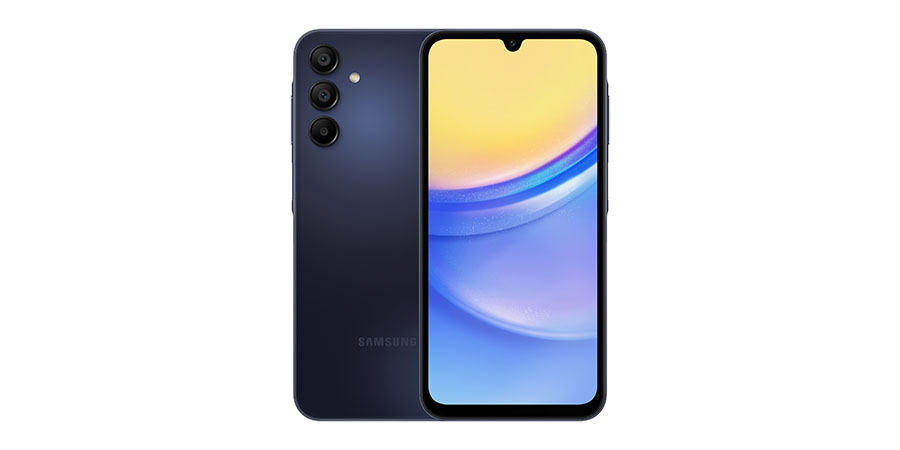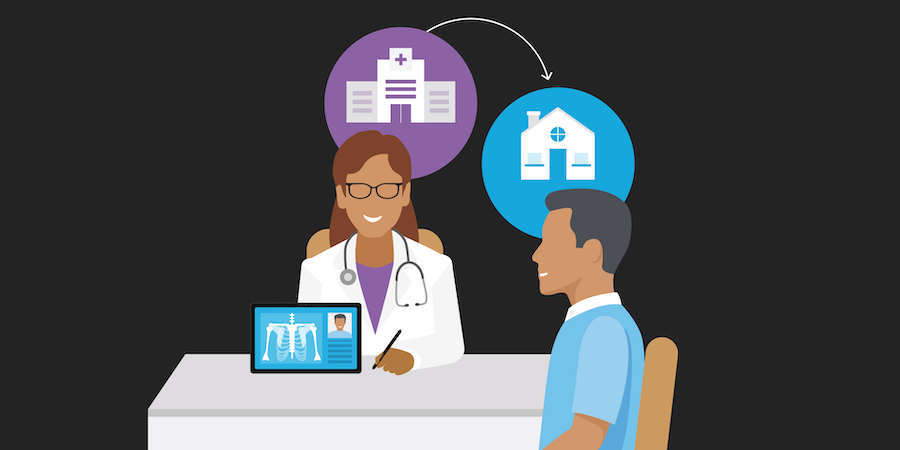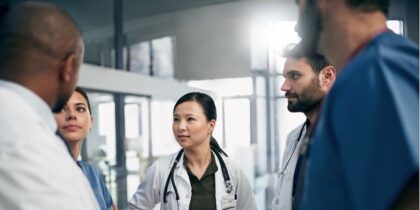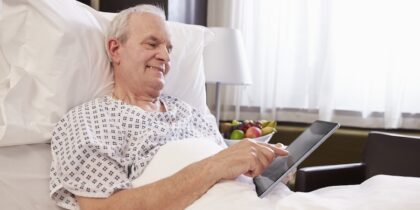New mobile healthcare technology enabling at-home patient monitoring and treatments is transforming the industry. It allows medical teams to provide proactive and predictive care in between their patients’ regular doctor visits.
Healthcare providers are increasingly adopting remote patient monitoring (RPM) initiatives and equipping patients with Bluetooth-enabled devices, such as consumer wearables, pulse oximeters, and blood pressure and glucose monitors, so they can check their vital signs at home. This allows clinicians to track their patients remotely and intervene if their health changes.
Medical device manufacturers have also built implantable devices, including pacemakers, that enable continuous monitoring of patients’ vital signs. Meanwhile, neuromodulation devices implanted in the brain or spine can stimulate nerves and treat chronic pain, depression, Parkinson’s disease and other conditions. Through real-time remote monitoring, doctors can supervise the care of patients with these implanted devices.
Mobile devices for healthcare are essential because they serve as the mobile form factor that the software-as-a-service (SaaS) application is downloaded on to enable these at-home patient care capabilities. In fact, RPM and implantable devices are often paired with mobile devices, which store patient data on the SaaS application’s cloud. Through their cellular connections, the mobile device sends the data to patients’ electronic medical records or other health system apps. If abnormalities are detected, the software alerts clinicians to intervene and reach out to their patients.
Samsung Galaxy A15 5G Healthcare Edition is an affordable mobile device and software bundle that allows healthcare providers and medical manufacturers to easily configure, deploy and secure devices in bulk. This is useful for patients who use RPM devices and other digital patient care technology.
Remote patient monitoring enables more efficient, cost-effective care
Telehealth saw rapid adoption during the pandemic — and today, RPM, which is a form of telehealth, continues to increase in popularity. By 2025, an estimated 70.6 million U.S. patients, or 26.2% of the population, will use RPM tools, according to eMarketer.
RPM peripherals, combined with mobile devices, help address the challenge of taking care of patients with chronic conditions, such as hypertension, diabetes and heart disease.
Studies show that preventative care and early intervention through RPM not only enable more efficient and cost-effective care but also improve patient outcomes and reduce hospital readmissions.
According to one analysis, remote monitoring resulted in 87% fewer hospitalizations, 77% fewer deaths and reduced per-patient costs, according to the Journal of the American Medical Association. UC San Diego Health’s RPM efforts have helped patients with hypertension reduce their blood pressure.
Samsung’s mobile healthcare technology
To address the needs of this market, Samsung recently unveiled Galaxy A15 Healthcare Edition, which bundles Samsung’s affordable Galaxy A15 5G mobile device with the Samsung Knox cloud security and device management solution all in one package.
Galaxy A15 5G entry-level mobile device, which features a 6.5-inch display, offers a brighter screen, more storage, and longer battery life than its predecessor — and delivers the performance that healthcare providers and medical device makers need for their at-home patient care medical kits.
With this solution, Samsung is bundling hardware and software for the first time to make it simpler and more cost-effective for providers and device makers to configure, manage and secure a large fleet of devices.
For that reason, Samsung has expanded the lifecycle of Galaxy A15 from one year to three years for the healthcare market. Samsung has traditionally given A Series phones a one-year lifecycle in the consumer market. Now, healthcare organizations and companies that invest in Galaxy A15 Healthcare Edition can standardize on the same device for three years, enabling them to have a stable hardware and software platform.
To that end, Galaxy A15 Healthcare Edition maintains the Android 14 OS out of the factory throughout the mobile device’s lifecycle. At the same time, it provides flexibility for customers upgrading their OS when their applications are ready and certified using Samsung Knox E-FOTA. Samsung provides software maintenance support for five years and includes a two-year subscription to two Samsung Knox components:
- Knox Configure Dynamic allows IT administrators to remotely configure, secure and lock down the mobile device in bulk.
- Knox E-FOTA is used to schedule device updates and ensure every device is using the correct version of the Android OS and has all the required firmware updates.
After two years, organizations can renew the Samsung Knox licenses.
“When our healthcare customers buy the new device, they not only have the hardware, they will have the security solution and the ability to deploy applications on the device and lock them down in kiosk mode,” said Abhay Ganesh, a B2B category management lead at Samsung.
Improve the patient experience with mobile
From check-in to remote monitoring, get your free guide to elevating care with mobile technology. Download Now
He said maintaining the base software allows health systems and companies to remain compliant with country regulations. In fact, Samsung Galaxy A15 Healthcare Edition has already received certifications for voice and data from the FCC in the United States, ISED in Canada and regulatory bodies in the European Union and the United Kingdom for data.
Galaxy A15 Healthcare Edition powers at-home digital care solutions
To recap, healthcare organizations are increasingly adopting remote monitoring and other at-home digital care services to improve patient care, while optimizing workflows and improving efficiencies.
Samsung Galaxy A15 Healthcare Edition, with its integrated hardware and software bundle, enables healthcare organizations and medical device makers to scale the delivery of these digital services to patients.
Security is baked into the hardware and starts at the kernel level — and is not simply a security overlay. It is also a cost-effective solution because it simplifies software compliance needs and reduces device, implementation, maintenance and regulatory costs.
Learn how your organization can take advantage of mobile healthcare technology like Samsung Galaxy A15 Healthcare Edition, and download a free guide to deploying remote patient monitoring.








